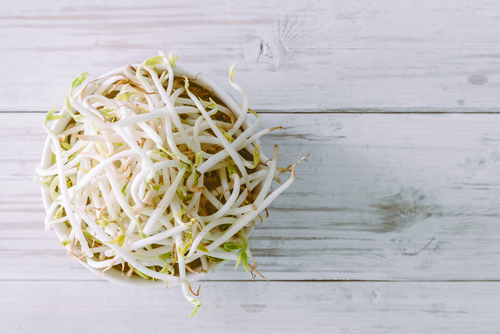Some examples of seeds that you can sprout include: alfalfa, mung beans, lentil and garbanzo beans. Sprouts are extremely nutritious. When sprouted, the stored nutrient potential in the seed is actualized in the shoot. Thus increasing its protein, chlorophyll, vitamin and fiber content.
Sprouts: Easy and Nutritious
The sprout is a living food that is extremely nourishing and contains active enzymes. These properties support digestion and metabolism.
The great thing about sprouts is that they are easy to grow at home especially helpful in the winter when less produce is available.
Sprouting
- There are sprouting kits you can buy, or you can use a glass jar covered with a cheesecloth or with small holes drilled in the lid.
- Rinse the seed, grains, or beans and place in the jar, a fairly small amount, keeping in mind that they will increase in volume substantially.
- Cover with purified water and soak, about 24 hours rinsing once or twice.
- After this rinse 2-3 times a day draining the water leaving the sprouts moist and out of direct light.
- Once they have started to sprout they can be moved to have more light. Continue rinsing 2-3 times a day. Most sprouts are ready to eat after 1 to 2 days in the light.
Keep in mind that there is a small risk of contamination so be careful to choose high quality seeds to sprout, and keep them clean by rinsing in clean, filtered water. And although eating them raw is very nutritious, you may choose to cook them depending on the state of your current health.
Overall sprouts are an easy, nutritious, and economical food that should be enjoyed by more people to increase health and vitality.
Reference:
Haas, Elson M., and Buck Levin. “6.” Staying Healthy with Nutrition: The Complete Guide to Diet and Nutritional Medicine. Berkeley: Celestial Arts, 2006. 323-324. Print.


